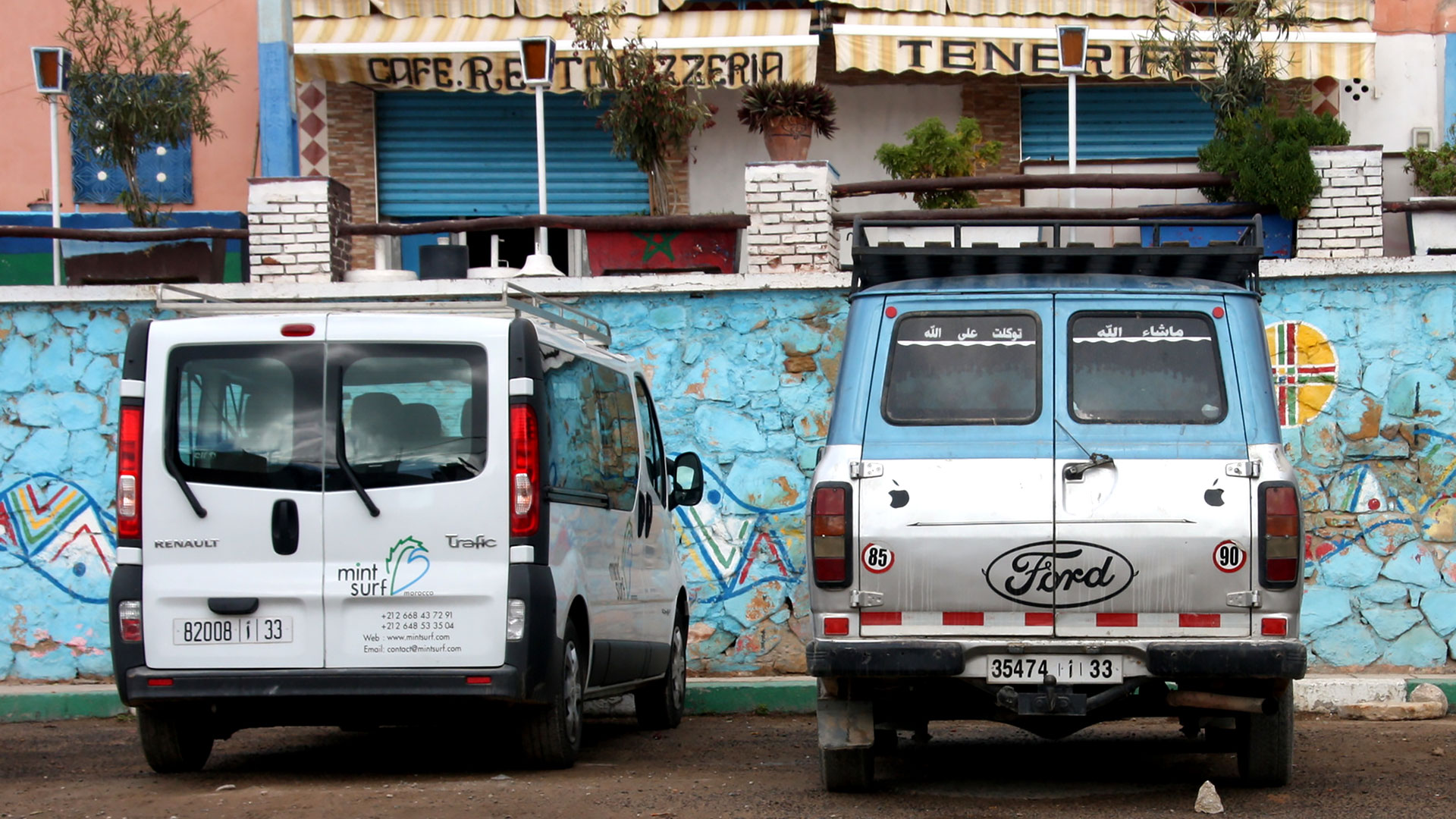

When Ford phased the Econoline van out of its truck lineup at the close of 2014, rock bands across America uttered a collective, mournful sigh. How could this famous workhorse schlep-mobile be axed? It doesn’t help that the new ones puttering around as plumbing trucks and bakery delivery vans look a lot like the also-Euro Sprinter van that Dodge, or Mercedes-Benz, or whoever, makes. But then I traveled to Morocco, where there are loads of really cool-looking old Ford vans. They’re definitely not Econolines, they’re definitely not going on Neil Young tour any time soon, and they’re everywhere.
These boxes on wheels had flat steel five-lug rims with huge lug spacing. Sculpted metal bodywork frame windows with rounded corners. The hood slopes like that of an Econoline, but the edges aren’t creased as sharply. It’s the difference between a white porcelain mug of black coffee and a round-bottomed teacup and saucer containing tea, milk and sugar. There is functionality, but also a delicateness. There is something, yes, English about them.

The strange vans were, of course, old Ford Transits. Most of them appeared to be from the vehicle’s second generation, which ran from 1978 to 1986. If they looked a little English, that’s probably because the Transit was originally conceived to replace the small, English Ford Thames 400E van in 1965. The Mark I van, as the original was called, had round, sealed-beam headlamps, pronounced front fenders and a wide grille. The front-end styling was not unlike that found on Ford passenger cars in the mid-Fifties. So there’re your American roots. Style, baby. Everyone wanted a piece of America.
Related: The Real Heroes of the Sahara
I actually saw a couple of these first-gen Transits trundling through the mountains in southern Morocco, and they’re a sight to behold—trucks with car-like attractiveness.
Like modern Transits, the old ones came equipped with much smaller engines than trucks in America typically had at the time. The first ones had 1.7- and 2-liter V-4 engines. That’s right, V-4. You have to remember that roads in England can be small, winding and, on the whole, fairly flat. It’s a good thing, as these engines churned out only 73-93 horsepower. No bother; Ford sold plenty.

Top Gear once quipped that during the Seventies, 95 percent of all robberies committed in the UK involved Mark I Transit vans. So they’ve got that going for them, too.
The ones I saw in Morocco these days are the Mark II variety, which have a longer snout that allowed Ford of Europe to fit larger engines under the ol’ bonnet. We’re not talking much larger, but the Mark IIs were designed to fit longer, more capable and above all, cheaper-to-produce inline-4 and V6 engines. Many of the ones I heard rumbling by in Morocco were diesel-powered.
One afternoon, I observed a quartet of Moroccan men – wearing their traditional djellabas sitting in the back of one of these vans. It had been set up like a living room, complete with a couch and a small table, upon which sat a tray containing four glasses and a small metal pot filled with mint tea. They were talking and enjoying the warm North African sunshine pouring in through the open back doors. They wouldn’t allow me to take a photo, and I didn’t have the requisite baksheesh to make them entertain the request, but the open doors framed the scene like a diorama. You get the idea.

Thirty-year-old Transits could also be seen carrying tour groups, with bails of hay piled high atop the roof and packed to the gills with tools and building materials. Like pickup trucks in the U.S., they seemed to be the Swiss army knife of vehicles in Morocco.
As always, I’m thinking like a gearhead when I observe such scenes. I say things like, “Hey self, did you notice all the cool-looking beat-up vans around here?” And I’ll answer myself, too. “Yeah, maybe we could get one, real cheap, send it back to the U.S., and stuff a small-block Ford V8 into it. Or maybe we could turn one into a 4×4! Hmmmm…”
The wheels of the mind do turn. I could, like those Moroccan men I saw having tea, turn an old Transit into a little living room on wheels. How rock ‘n roll would that be?